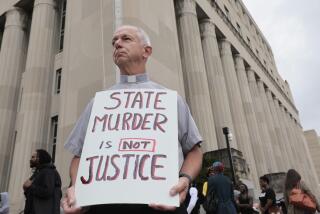Weighing all the evidence
- Share via
IN THE FIRST OPINION FROM ITS newest justice, the U.S. Supreme Court has given criminal defendants something most Americans assumed they already possessed: the right to offer evidence that somebody else committed the crime. But that’s only part of the significance of this week’s unanimous ruling setting aside a murder conviction of a South Carolina man. The decision, written by Samuel A. Alito Jr., also puts police and prosecutors on notice that the “magic bullet” of evidence -- DNA -- can misfire if physical evidence and test results are handled carelessly.
Law enforcement officials should have learned that lesson after the 1995 acquittal of O.J. Simpson on charges that he murdered his wife and her friend. Jurors in the trial cited defense claims that sloppy handling undermined the credibility of DNA evidence. This week’s Supreme Court decision also involved DNA evidence, which (along with a palm print and fibers) led prosecutors to charge Bobby Lee Holmes with the 1989 rape and murder of an 86-year-old woman. Relying on a state rule, the trial judge ruled that this evidence was so strong that Holmes’ lawyer couldn’t call witnesses who would support the theory that another man committed the crime.
Most Americans would be shocked by the suggestion that someone on trial for his life couldn’t offer evidence that someone else was guilty. So were both liberal and conservative members of the Supreme Court, led by Alito, a former federal prosecutor.
“The Constitution guarantees criminal defendants a meaningful opportunity to present a complete defense,” Alito wrote. “By evaluating the strength of only one party’s evidence, no logical conclusion can be reached regarding the strength of contrary evidence offered by the other side to rebut or cast doubt.” But in the era of “CSI,” can DNA evidence really be questioned? It can be when the defense argues, as it did in this case, that the evidence was compromised by careless handling or deliberate fraud.
No one doubts that mistakes have been made in the collection and preservation of DNA evidence over the years. In 2002, for example, the DNA unit of the police crime lab in Houston was closed after revelations that evidence had been contaminated, leading to a reconsideration of a decade’s worth of convictions based on DNA results.
The more careful police and crime labs are in handling DNA evidence, the harder it will be for defense attorneys to question its reliability. But when doubts about such evidence are raised, the Supreme Court rightly has ruled, it’s only fair to allow a defendant to point the finger at someone else.
More to Read
Sign up for Essential California
The most important California stories and recommendations in your inbox every morning.
You may occasionally receive promotional content from the Los Angeles Times.










